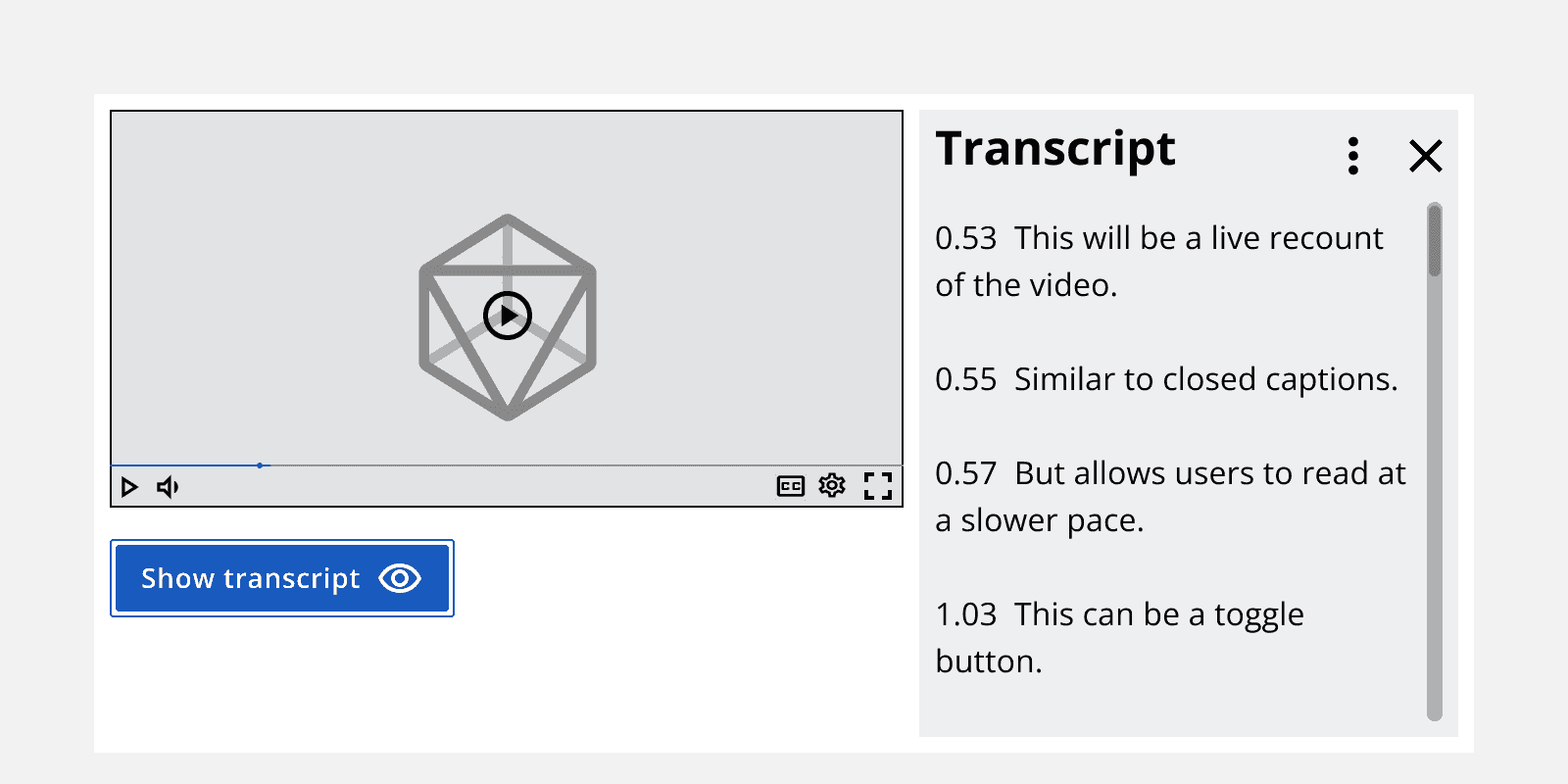Auditory needs
Auditory needs
Introduction
People will have different degrees of a hearing impairment. Profoundly or severely deaf people may rely on hearing aids and lip-reading/speaking, whilst others will struggle with noisy environments.
A hearing impairment can include things like finding issues with background noise through to side effects of medicines.
11 million people in the UK are d/Deaf or hard of hearing. You can
Examples of hearing impairments
The following table lists examples of hearing impairments in three columns (permanent, temporary and situational).
| Permanent | Temporary | Situational |
|---|---|---|
| Deaf (little to no hearing) | Ear infection | Background noise (noisy office) |
| Hard of hearing (mild to severe hearing loss) | Medicine side effects (such as for neonatal infections, malaria, cancer) | Noise-cancelling headphones (to counteract noise) |
| Exposure to loud noises | Poor quality audio |
How to design for auditory needs
In addressing some of the design tips below, we make it easier for everyone to use our apps.
Closed captions, subtitles and transcripts
Make sure any audio information is available in text.
For all audio content (including videos with audio) you must provide
Don't rely on automated subtitling and transcription because it might be inaccurate. Always check any automated subtitles and transcripts for accuracy.
Including closed captions and transcripts on video or audio files will make the page accessible to those with hearing impairments.

Varying points of contact
When planning meetings, people may request multiple points of contact. For people with hearing impairments, communication via phone may not be suitable. In these scenarios, providing multiple forms of contact will increase accessibility.
This can include interpreters for in person meetings, speech to text for virtual meetings and communication via messaging services.
Split content
Split larger chunks into smaller sections separated by headings. Smaller chunks are easier to read and less intensive compared to larger blocks of text.